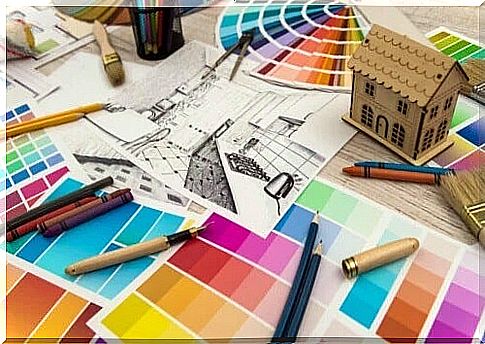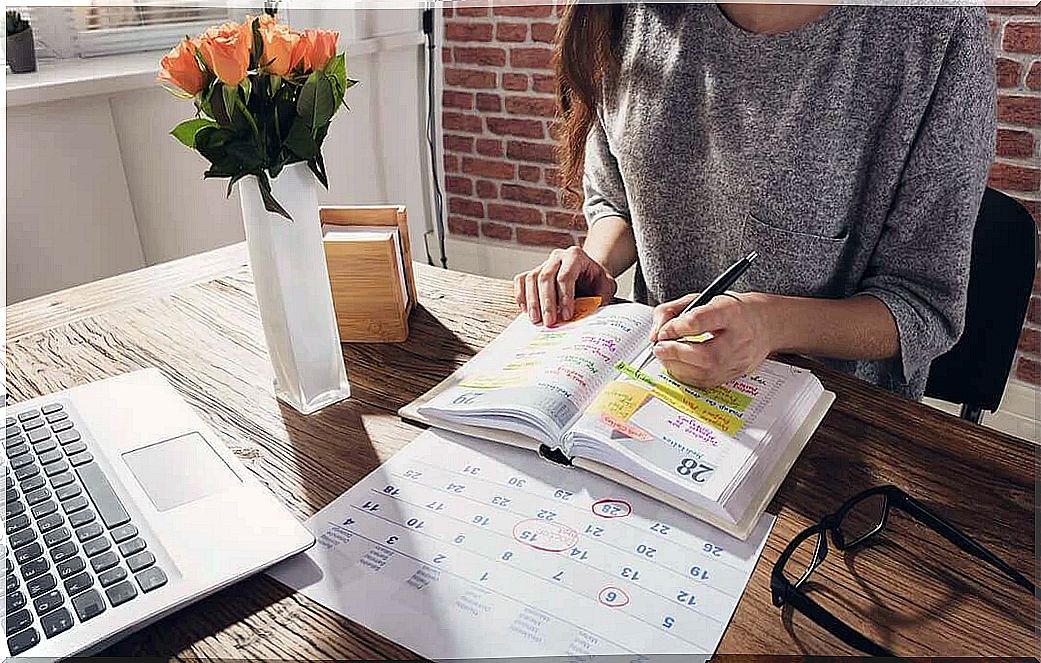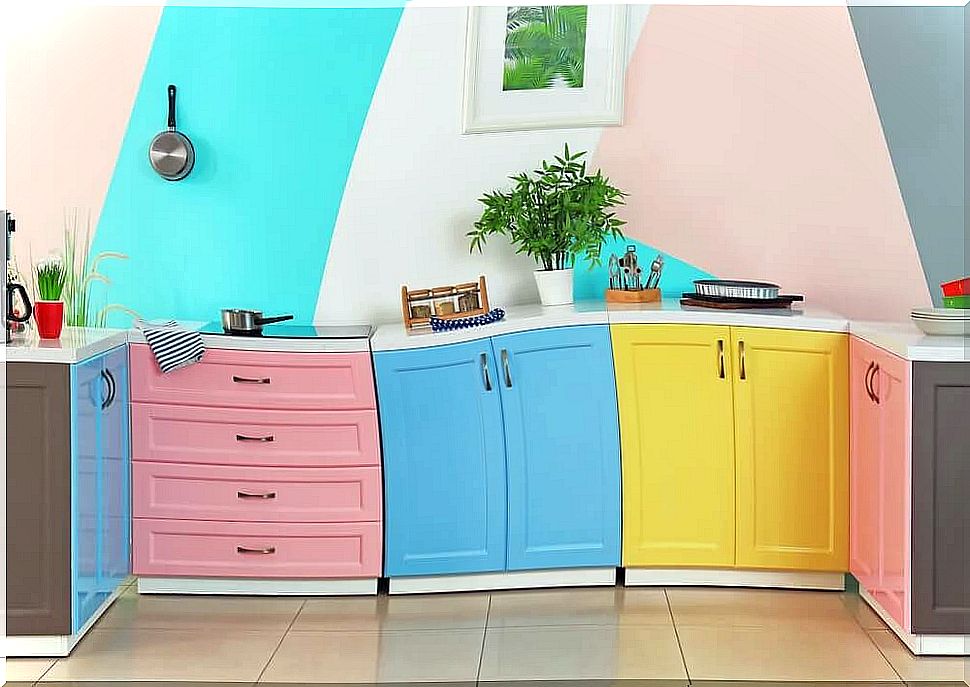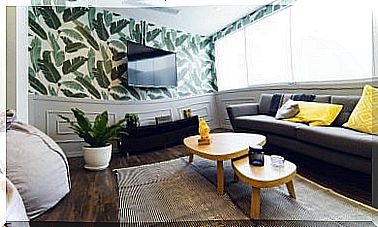8 Common Interior Design Mistakes
To be a great decorator, it is not enough just to know what to do. Sometimes it is more important to know what to avoid. Get to know the most common mistakes in interior design!

Sometimes we buy items for the apartment that don’t fit. That’s why we’re explaining 8 common interior design mistakes. This is how you can avoid or change them.
We all want to have a beautiful home that we feel comfortable in and that reflects our style. Although personal taste and comfort are the main things when decorating for each family or person, there are some basic rules. These offer us a guide to make the rooms harmonious and pleasant at the same time.
Sometimes small changes are enough to make a room look completely different.
Common mistakes in interior design
The house reflects our personality and our taste. It is the place where private life and intimacy take place. Of course we want to feel comfortable in it!
But while we try hard, we often fail to furnish our homes the way we want and we don’t understand what we’re doing wrong. Therefore, pay attention to the following common mistakes in interior design.
1. No planning of interior design and decoration
When we are thinking about moving or renovating a house, it is very important to have a plan that will allow us to set a style and evaluate the characteristics of the place. Although the budget is often insufficient to hire a professional interior designer, the design of the rooms is not a task that should be taken lightly.
The result, when interior design is taken lightly, is a series of items that often do not match each other or the location. This then leads to frustration and dissatisfaction.
However, if you make a plan that includes a budget, inspiration and design ideas, and you learn the basics of interior design, the end result will be much better.

2. Neglect of lighting
Lighting is one of the most important factors in interior design as it is one of the starting points in defining how a space should be designed to fit. The most common mistake is poor lighting.
However, it is also possible to use too much light by highlighting less flattering areas of the home or combining lightbulbs of different hues.
The lighting system is fundamental to rooms, especially tasks that require visual activity. This is explained in the “ Manual practico de iluminación ” by Ediciones UC . In general, you should start by evaluating the general lighting of the room to determine how much light is needed.
Then you can bring more light into the rooms that you want to highlight or for which it is particularly important as a work or reading area. In addition, it is necessary to also evaluate the shadows that the light sources create. For example, in a bathroom it is not convenient to have ceiling lights because they create shadows on the face.
3. Interior design: ignoring proportions
Failure to keep the correct scales and proportions in a room is a common mistake made by non-design enthusiasts as it can be a complex issue. If you put too many large objects in a room, it will appear small. Conversely, a room that is filled with small objects appears overloaded and confusing.
The key to solving this problem is to achieve equilibrium in space. In order for there to be harmony, there has to be a mix of different sizes and shapes. If you have a big house, everything you buy shouldn’t be big. The same is true if you have a small apartment.
4. Do not select a focus point
According to Julio Madrigal’s “Practical Guide to Interior Design and Decoration” , each room has a point that is most interesting. This is where the main activity of the room usually takes place. In a dining room, for example, the table with its chairs is the focus of interest.
5. Disturbing furniture in the interior design
The key to good interior design is to place the elements in such a way that they facilitate circulation. Furniture that hampers movement is one of the most common and easiest to fix interior decorating mistakes.
To fix this mistake, you can make a sketch of the room and suggest different locations. Then choose the furniture that will facilitate circulation.
6. Too much furniture and accessories
Many households tend to have too much furniture and accessories over time. Storing family heirlooms can become inconvenient when they can no longer be found or become a meaningless collection.
When designing the interior, it is also important to evaluate the objects according to their contribution to the space, in terms of usefulness or aesthetics.
Even with kitschy decoration, which is characterized by an overloaded style, the elements must maintain a style and have a decorative purpose. If you want a beautifully designed home, don’t leave anything to chance. Evaluate which furniture and accessories you no longer like or do not contribute to your well-being.
7. Interior design: Little furniture and accessories
Although minimalism is a trend characterized by the use of few resources to customize spaces, one of its principles is that objects should be functional. If you don’t have furniture and accessories that perform certain organizational functions, you may find yourself frustrated a lot.
If there is not enough furniture and accessories, uncomfortable situations arise, e.g. B. if you don’t have space to put your keys and jacket when you get home. These situations then completely spoil the style of the house because they create clutter. It is best to use the popular saying “Everything has its place” .
8. Follow trends without reflecting on them
One of the most common mistakes is trying to stick to the latest trends and listening to other people’s opinions without wondering what we like best about it. The renowned Spanish interior designer Sussana Cots pointed out in several interviews the importance of emotional interior design, i.e. the therapeutic influence of the design of rooms.
This designer also points out that there are certain types of elements in interior design that affect mood, such as smell, color, layout and light. Many of these aspects are also linked to personality.
Therefore, you should adapt the decoration to your feeling and comfort. Only adopt the trends that match your preferences.

What can we do with the interior design?
Knowing what not to do is a starting point for what works in interior design. The most important thing, however, is that you are comfortable with the furnishings and style of your home and that it suits your taste.
However, here are a few essential things to keep in mind:
- Get inspiration from social media, the internet and magazines: you can find the best tips, tricks and trends in our decoration area.
- Use natural light: Give natural light a chance to illuminate your home, especially the work areas.
- Pay attention to quality: if you want to invest in new items for your home, it is better to pay attention to good quality.
- Donate what does not contribute: You can use the technique of the famous Marie Kondo by donating what does not generate emotions or fulfill any function.
Dare to experiment!
Now that you’ve learned the most common interior design mistakes, it’s time to start evaluating your own spaces. Reaching an ideal place is usually about trying out and correcting.
Try to be flexible and give yourself the opportunity to make changes at any time. And when you have the opportunity to seek professional advice, it is a worthwhile investment.









